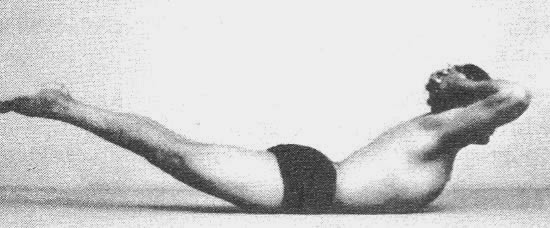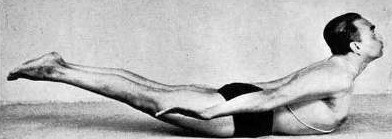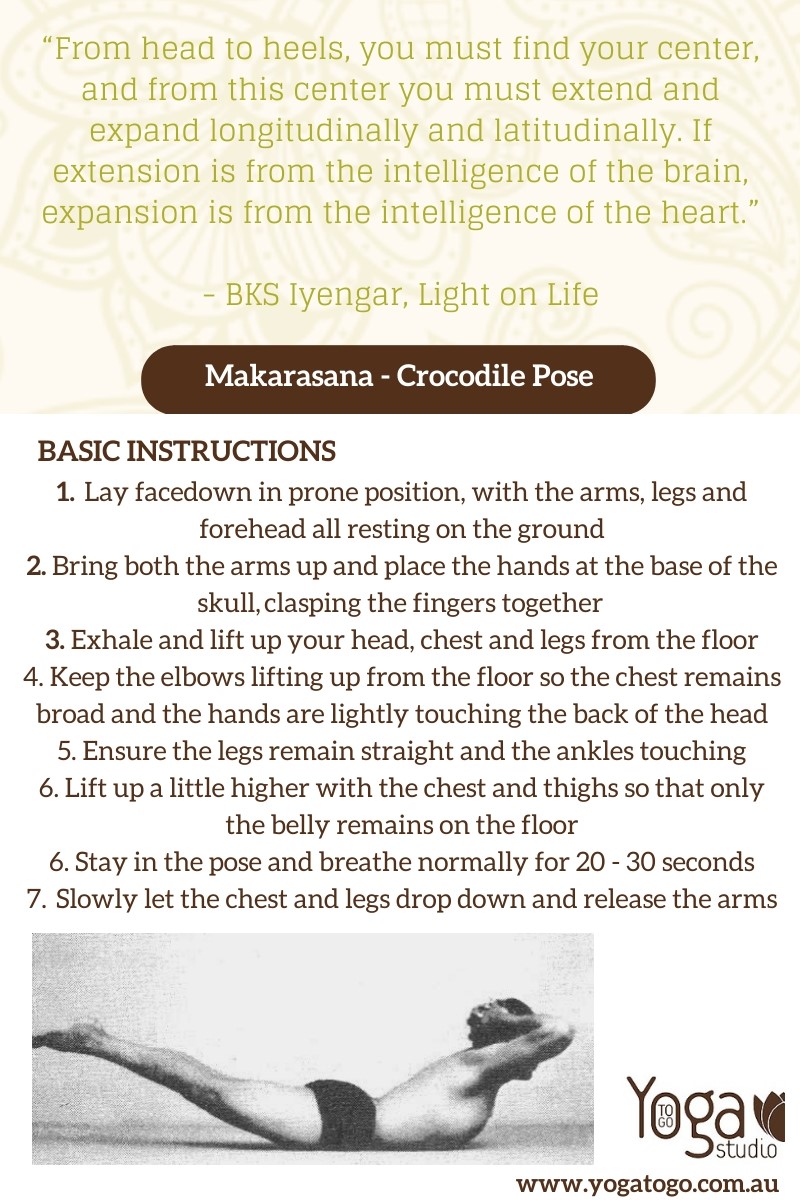Makara - crocodile, Asana - pose
 Even though, Makarasana doesn’t have it’s own separate and defined instructions in Light on Yoga, it’s a pose that we practice regularly as part of our ‘baby backbend’ sequence, so we thought it might be helpful to put the spotlight on it for this month’s blog - and had to do some deep digging and lots of practice to get some info to share!
Even though, Makarasana doesn’t have it’s own separate and defined instructions in Light on Yoga, it’s a pose that we practice regularly as part of our ‘baby backbend’ sequence, so we thought it might be helpful to put the spotlight on it for this month’s blog - and had to do some deep digging and lots of practice to get some info to share!
According to Hindi Mythology, ‘Makara’ is a huge fantastical sea animal that has been described as being similar to a crocodile (thus it’s english name) but could also have been a shark or dolphin.
It’s very similar to Salabhasana – locust pose, in that the chest, head and legs are all lifting up from the floor, so that only the belly and pelvis remain on the ground. The main difference is in the placement of the arms and hands. In Makarasana the hands are clasped behind the head with the elbows bent and lifting upward, while in Salabhasana the arms are stretching straight with the hands beside the hips and reaching back towards the feet.
In Light on Yoga, BKS Iyengar that Makarasana helps to increase bodily heat. Some other benefits include improved posture and:
· Strengthens: spine, back muscles and legs
· Stretches: shoulders, chest, belly and front thighs
· Improves: digestion and stimulates the abdominal organs
· Relieves: lower back pain and stress
We often practice what is referred to as ‘baby backbend’ poses like cobra, locust, crocodile and even Dhanurasana as beginners or in order to prepare the body for deeper and more active backbends. These prone (facedown) poses allow us to develop the back muscles, while keeping the lower back supported. This helps us learn how to perform more advanced backbends without using or straining the lower back.
Try practicing Bhujangasana (cobra) and Salabhasana  (locust – see picture on the right) poses before attempting Makarasana, to ensure that your chest and legs are strong and lifting sufficiently – and make sure the head and neck are not being strained or pulled against the weight and pressure of the hands and arms, which must remain light and lifted.
(locust – see picture on the right) poses before attempting Makarasana, to ensure that your chest and legs are strong and lifting sufficiently – and make sure the head and neck are not being strained or pulled against the weight and pressure of the hands and arms, which must remain light and lifted.
Important note: this pose is not suitable during pregnancy or menstruation. Always practice under the guidance of an experienced and certified yoga teacher and speak to your doctor or physiotherapist before starting any new exercise programs.
Download our infographic below for some simple instructions and don’t forget to send us your Makarasana and baby backbend questions, tips and photos. Email info@yogatogo.com.au or message and tag us on Facebook, Instagram or Twitter.



